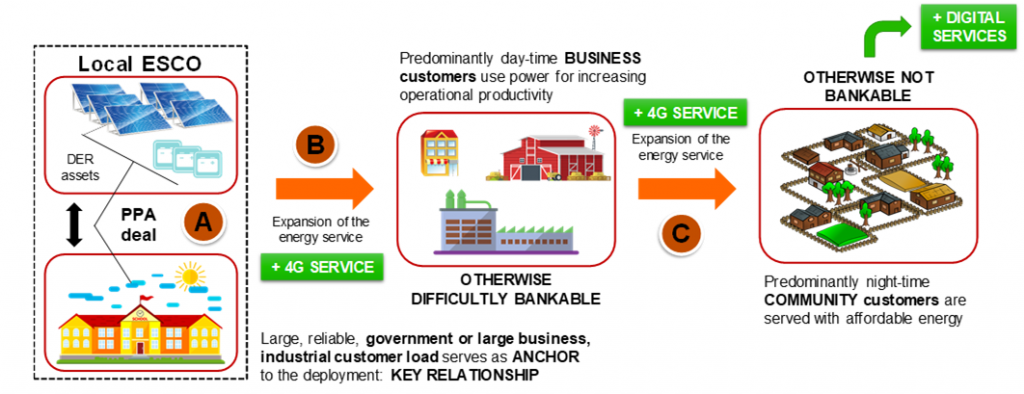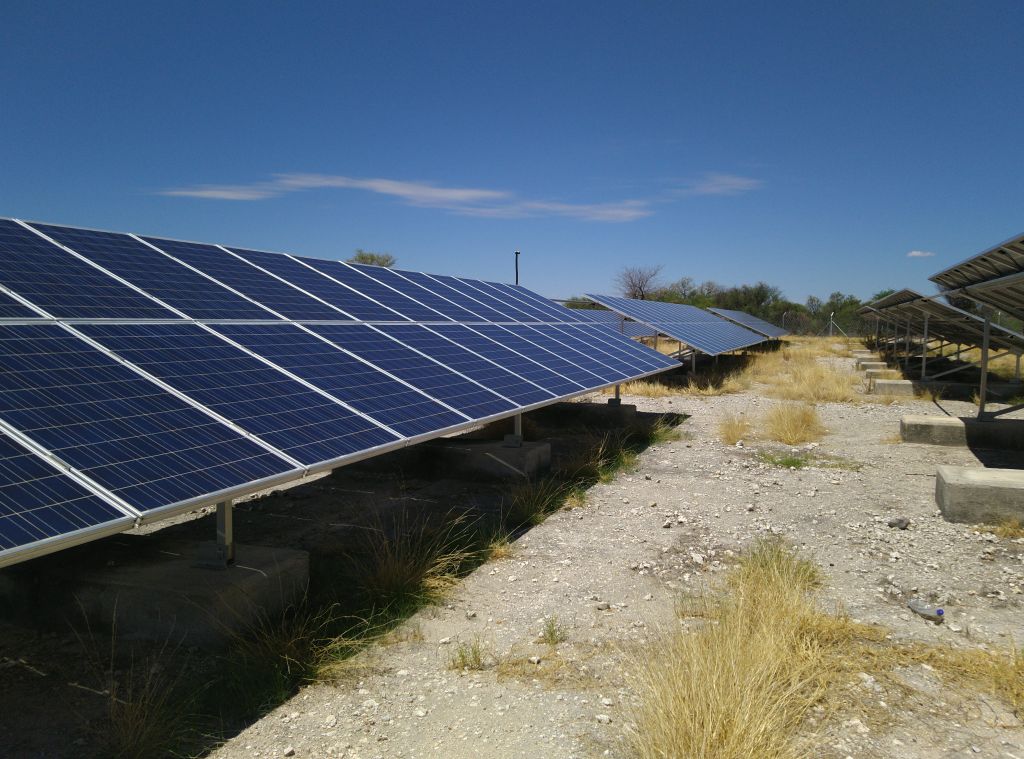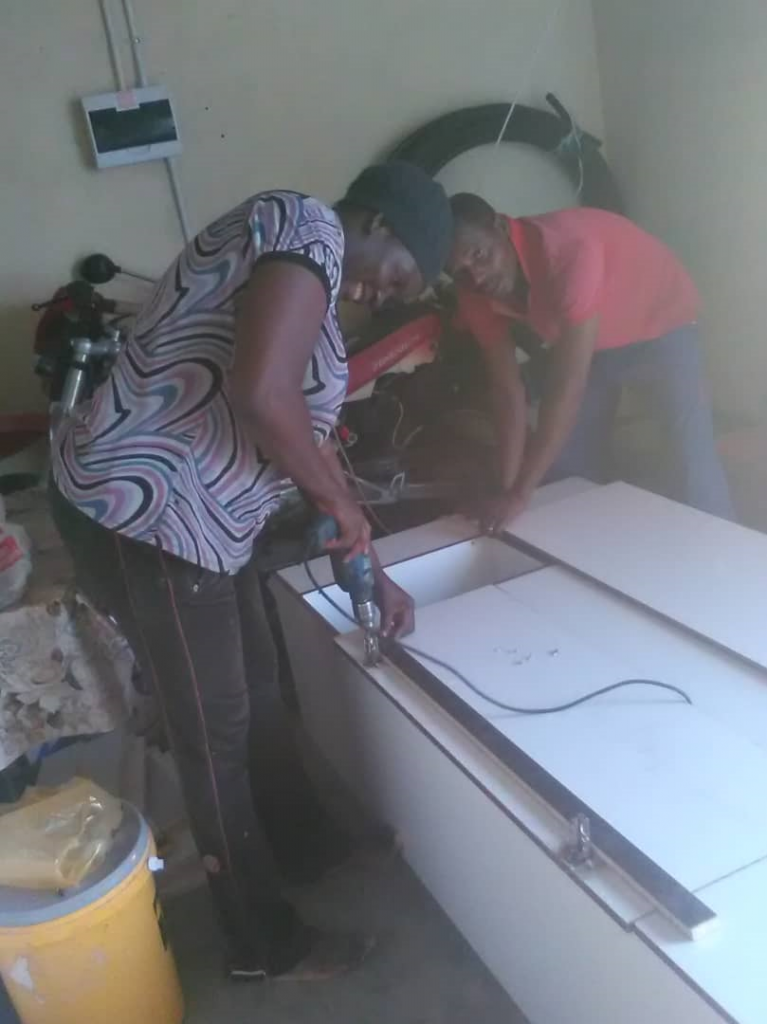PhD Gonçalo Mendes, Post-Doctoral Researcher, LUT University, School of Energy Systems
In the so-called Age of Information, access to technology and its many wonders remains far from geographically ubiquitous. Globally, more than 800 million people still lack access to a reliable electric connection. Tragically, some 70% of those are in Sub-Sharan Africa (SSA), where the average electricity access rate remains under 50%. For comparison, this figure is approximately 90%, worldwide.
The rural people of SSA face the most struggles. In Namibia, those communities represent about half of the country’s population, the majority of which lives off the grid. Rural Namibians have little purchasing power and often can’t afford a grid connection or the expensive electricity it delivers. Additionally, many live for own sustenance. As a result, they’re largely excluded from the services society and its value-added activities, which hampers socio-economic growth.
How to approach these disenfranchised communities in ways that offer energy innovation while unlocking opportunities for their economic development? This is where Fusion Grid comes in.
Traditional business models for remote community electrification have been largely based on service-oriented approaches, in which one or more third-party entities carry the upfront investments and the O&M costs of the installations, and with it most risks of the project. While these approaches have merit, due to the amounts of capital involved, cost-recovery remains challenging, and some sort of financial aid and/or donations is usually required. The lack of a solid business proposition has been keeping energy investors away, especially in an environment already complex to navigate.
At the same time, there are myriad lessons learned from successful, lower capital, smaller scale projects, such as solar home systems, solar kiosks, and electrified appliance shops, which have become mainstream across SSA. Key factors for the success of these product-based approaches have reportedly been not only microloan financing, but also flexible cost-recovery mechanisms such as pay-as-you go, which adapt customer payments to their timely ability and/or willingness to do so.
Researchers have hypothesized that energy access alone may not guarantee community growth in the highly constrained remote environments of SSA. Thus, long-term socio-economic benefits and prosperity may only be ensured via inclusion of additional high value-added services for rural communities. One such service is connectivity; SSA is the fastest-growing mobile region, globally, and a recent World Bank report found that 240 million mobile phone subscribers in Africa still did not have an electricity connection at home.
Fusion Grid seeks to overturn the low efficacy of established rural electrification approaches by proposing an innovative stacked service business model incorporating revenue streams from different value-added services, starting from a combination of electricity and high-speed connectivity supply.
The Fusion Grid business model has its roots in the Anchor-Business-Community (ABC) model. In the SSA context, due to limited purchasing power and overall uncertainty hampering local development, it is often difficult, if not impossible, for energy providers to finance renewable energy installations exclusively serving residential or small business customers.
A deal with a so called “anchor customer”, with deep pockets and a large, predictable power demand could unlock that funding. This deal makes the project bankable, largely because it establishes the purchase of renewable power from the energy provider in the longer-term (for at least 20 years) and under a fixed tariff. The ABC framework allows then for service expansion to small business customers, who make valuable use of electric power for increasing operational productivity, thus generating more revenues and subsequent growth. The inclusion of rural businesses in the service reinforces the value proposition of the project, as well as its bankability. Lastly, the service is expanded to include residential customers. Homes are served with affordable electricity, even if their ability to contribute to project cost-recovery remains limited.
Fusion Grid enhances the ABC approach, by serving small rural businesses and homes not only with clean electricity, but also with high-speed 4G connectivity (Figure 1). These services will be flexibly priced and flexibly paid, based on willingness-to-pay (WTP) revenue mechanisms, allowing for progressive cost-recovery of the project without compromising socio-economic growth. The WTP of different customers can be derived from current energy expenses, such as those on kerosene for lighting, on candles, and charging devices, but should be further investigated through working directly with the communities.

Community growth is expected to go hand in hand with the emergence of digital services, enabled by Fusion Grid mobile and interactive platforms and tools. As a last step of project cost recovery, percent fees will be charged to transactions linked to digital sales from these services. Such an approach promotes transparency and safeguards community interest, as further project value can only be captured via subsequent development of the local digital economy. In Fusion Grid, business models are perceived as complex structures, explicitly evolving in time. Correspondingly, their ability to deliver new value streams increases with the growth of community prosperity (Figure 2).
Fusion Grid’s business model is unique in that it is geared towards the sustainable growth of targeted communities, and subsequent cost recovery based on newly established digital services.

Therefore, the Fusion Grid stacked business model approach captures value from three specific revenue streams:
- Anchor payments: Predictable, fixed revenue stream, agreed upon a (long-term) power purchase agreement. It reduces project risks and enables bankability of the project. Primary source of value of the project;
- Payments from local businesses: WTP-based revenue stream, mainly linked to electricity and power, as well as connectivity services, operating as a secondary (yet relevant) source of value for the project;
- Payments from households: Electricity and connectivity are WTP-based revenue streams. The low electricity use together with reduced purchasing power is likely to offer limited cost-recovery value to the project. Revenues from connectivity could be more significant. Additional revenue streams come from digital services enabled by connectivity, which are based on a percent fee charged to sale transactions.
The Fusion Grid project’s aim is to investigate ways to promote sustainable growth in remote, rural communities of SSA through technology and business innovation. The developed Fusion Grid business models are one step in that direction. Furthermore, this conceptual work requires further validation and testing in real-world environments, more specifically with the Oniipa community, in Namibia.
LUT is developing follow-up research to Fusion Grid, in areas such as business model design frameworks and tariffication mechanisms for rural electrification projects.
For more information contact Gonçalo Mendes at goncalo.mendes@lut.fi.






